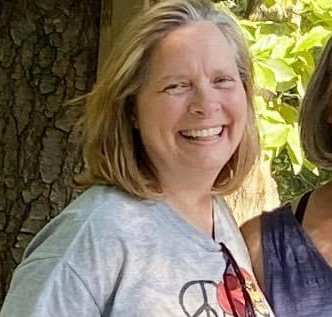I started to feel pain under my left shoulder blade and thought I had pulled a muscle. I iced it and it started to feel better.
But the next day, I woke up feeling worse. The pain had expanded around my rib cage on both sides, making it challenging to breathe. I went to work anyway, but I ended up going home a short time later. I had no appetite at all, and I couldn’t get comfortable.
I felt worse the next day, so I stayed home. By the third day, my breathing was worse, and I had developed chest pain. I was going to go back to bed, but my husband kept saying, “I don’t feel good about this. I think you need to go to the acute care center.”
Immediately upon arriving at the acute care center, I was rushed by ambulance to the local hospital. I was absolutely shocked when I was diagnosed with bilateral pulmonary emboli with infarction.
I have never been in the hospital other than to have three Caesarean sections. I had considered myself to be a relatively healthy person until this all happened. It took me several weeks to come to terms with my diagnosis. I felt lucky to have a team of doctors dedicated to finding out why this happened and treating me so that it doesn’t happen again.
In terms of risk factors, I was sick with a viral infection the week before the pulmonary emboli. I also found out through testing that I have the prothrombin factor II mutation heterozygous.
I have learned a lot from this experience. I have learned the importance of drinking lots of water. It is also super important to share your medical history with your family. Since I was diagnosed with a genetic mutation, I want my siblings and children to be tested as well. I am assuming my father had this same mutation, as he too had a pulmonary embolism at the same age as me, 65.
I am still on the mend from my blood clots. I am just now returning to normal activities, and I will remain on blood thinners for the rest of my life.
Resources
Prothrombin factor II mutation
Family Testing for Clotting Disorders
About Blood Clots




